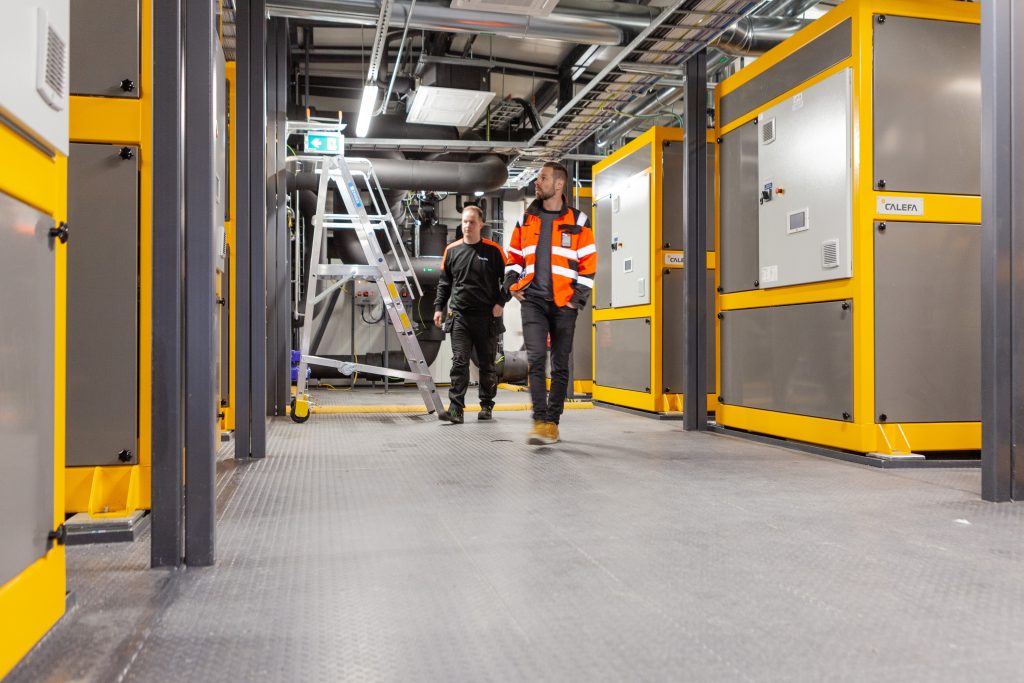The data center generates waste heat, which will soon be utilized into environmentally friendly district heating for the city of Seinäjoki.

Seinäjoki has a district heating network connection, which is connected to a new advanced heat producer.
MinersLoop enables environmentally friendly cryptocurrency mining in its data center using immersion technology, which significantly saves electricity compared to traditional crypto mining.
While a regular data center is cooled to about 20 degrees, the servers here are cooled in oil tanks to 30 degrees, generating waste heat of about 60 degrees. This excess heat is processed in a 2 MW heat pump plant with very high efficiency and utilized in the city of Seinäjoki as district heating.
Bitcoins are mined as a byproduct of heat production
In Finland, electricity production is increasingly dependent on weather conditions. A lot of wind power plants has been built and its amount is expected to multiply in the next few years.
The functionality of the power grid requires that electricity production and consumption are equal. Flexibility is needed, which means that end users can adjust according to the current needs.
Therefore, Seinäjoki mines the most when electricity production is at its peak and prices are lowest.
“Unlike regular data centers, in our mining-specific data center, we can adjust the power of the computers up and down as needed. An automated system can quickly handle large amounts of electricity, mine Bitcoins, and produce thermal energy,” says Robert Schulman from MinersLoop.
In Finland, the price of exchange electricity is announced the previous day at 2 pm, and the scheduling for the next day is based on that. Thus, cryptocurrency mining helps balancing our power grid and produces thermal energy for the residents of Seinäjoki.
Heat pumps increase the output power five times
During periods of low electricity prices, it has been profitable for energy companies to produce heat even with electric boilers, but heat pumps can typically produce three times the amount of energy with the same electrical power.
While the efficiency of an electric boiler is slightly below COP 1, the MinersLoop data center produces heat with an estimated COP 5 efficiency, thanks to the higher temperature level of waste heat, which improves efficiency.
During periods of abundant electricity production, it may be wise to store electricity as thermal energy since its storage is about a hundred times cheaper than storing electricity.
“The district heating networks in Finland are really significant assets and an infrastructure resource for thermal energy storage, which can provide the flexibility that our new energy system needs,” says Petri Vuori, CEO of Calefa.
District heating networks and power transmission networks in Finland are among the world’s best, opening up excellent prospects for the future.
Antti Porkka, an energy expert at Calefa, believes that decision-making requires predictability in order to attract more investments serving the environment and the economy in this green manner.
“Energy companies are thinking a lot about what is a winning strategy and politically acceptable. This indicates that the operating environment should be stable,” says Antti Porkka.
Energy companies invest in the future
Seinäjoki Energia’s strategic goal is to make its energy production carbon-free during the 2020s. Seinäjoki has made many major investments to achieve this goal.
In the autumn of 2022, a new district heating accumulator, electric boiler, and bio-heat plant were put into operation in Seinäjoki.
The heat from MinersLoop’s data center is strategically located within the network and supports the overall production system.
“The network can handle a capacity of 14 MW at this point, so there is room for expansion. We searched for the optimal location for this for a long time, and this is it,” says Niko Nissinen, a district heating engineer at Seinäjoki Energia.
The new solutions provide flexibility to the energy system and support the strategy of carbon-free energy production.
“The utilization of waste heat produced by the data center is a prime example of modern energy production that benefits both the environment and the economy,” says Antti Porkka.